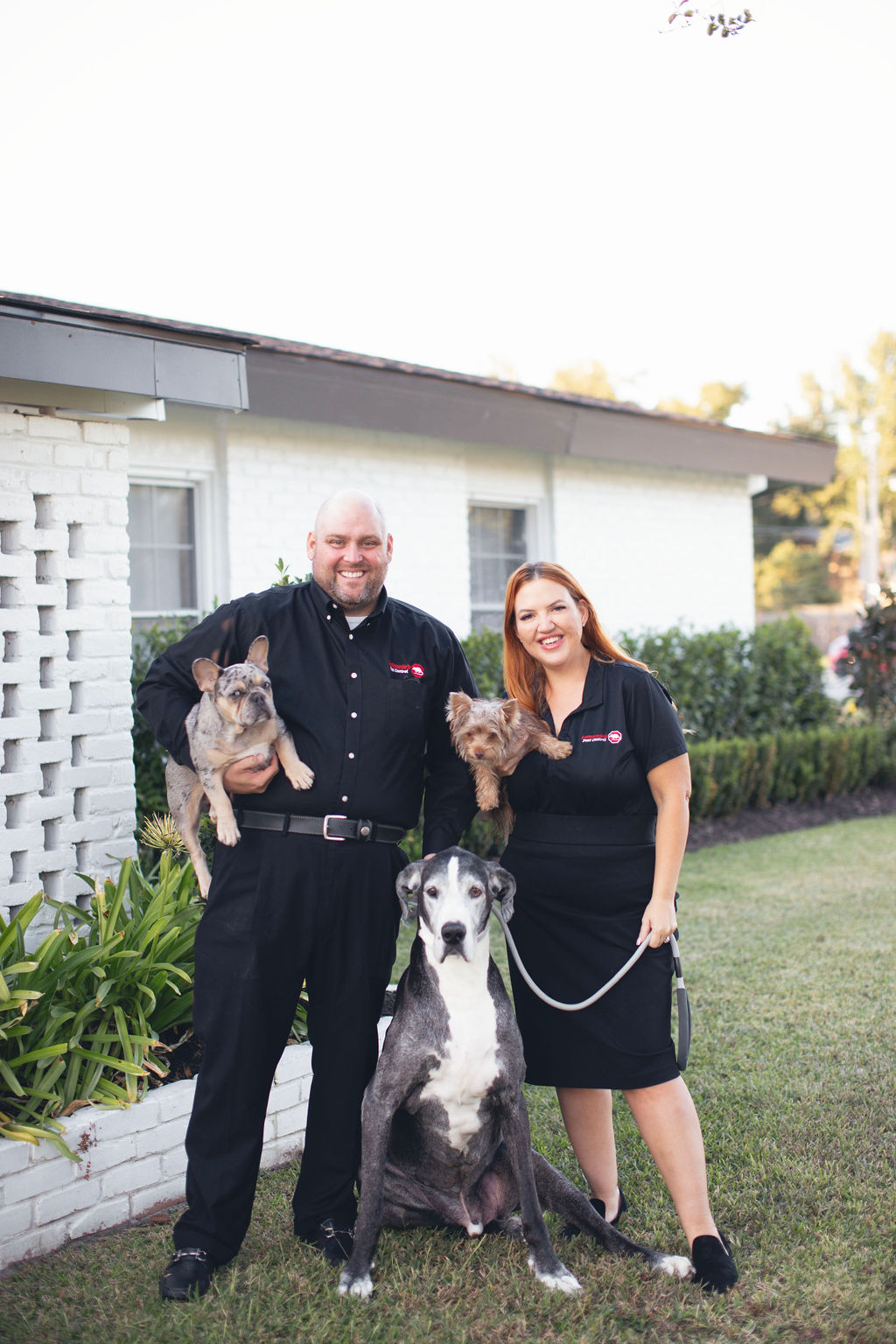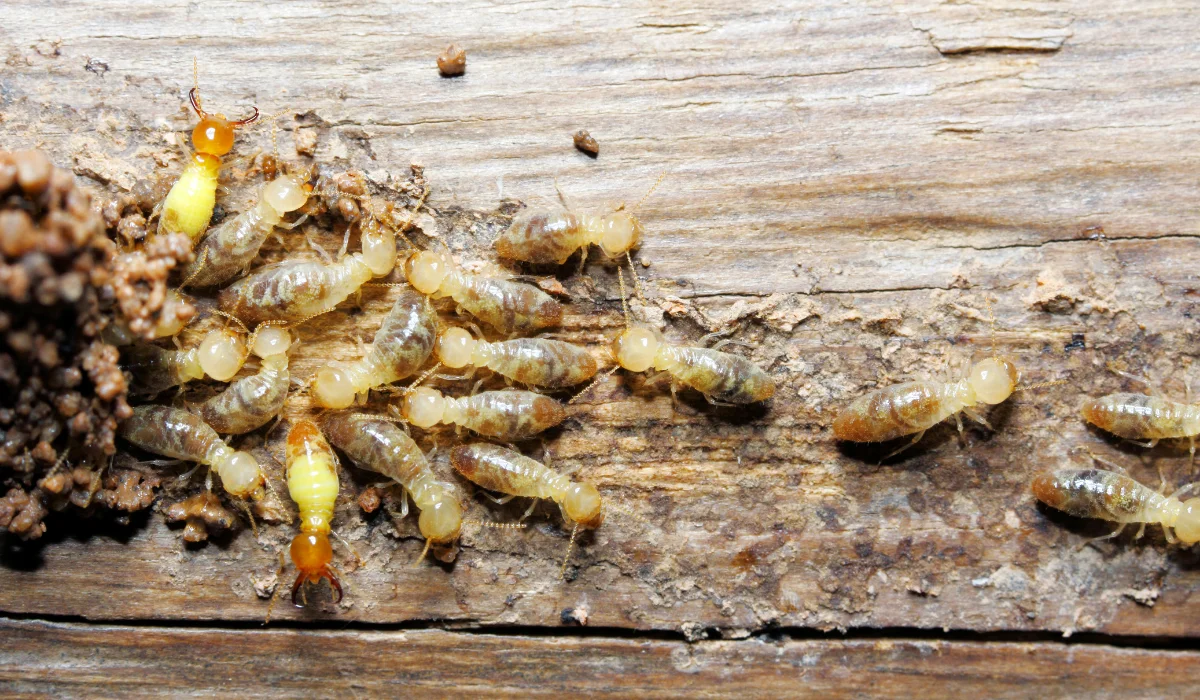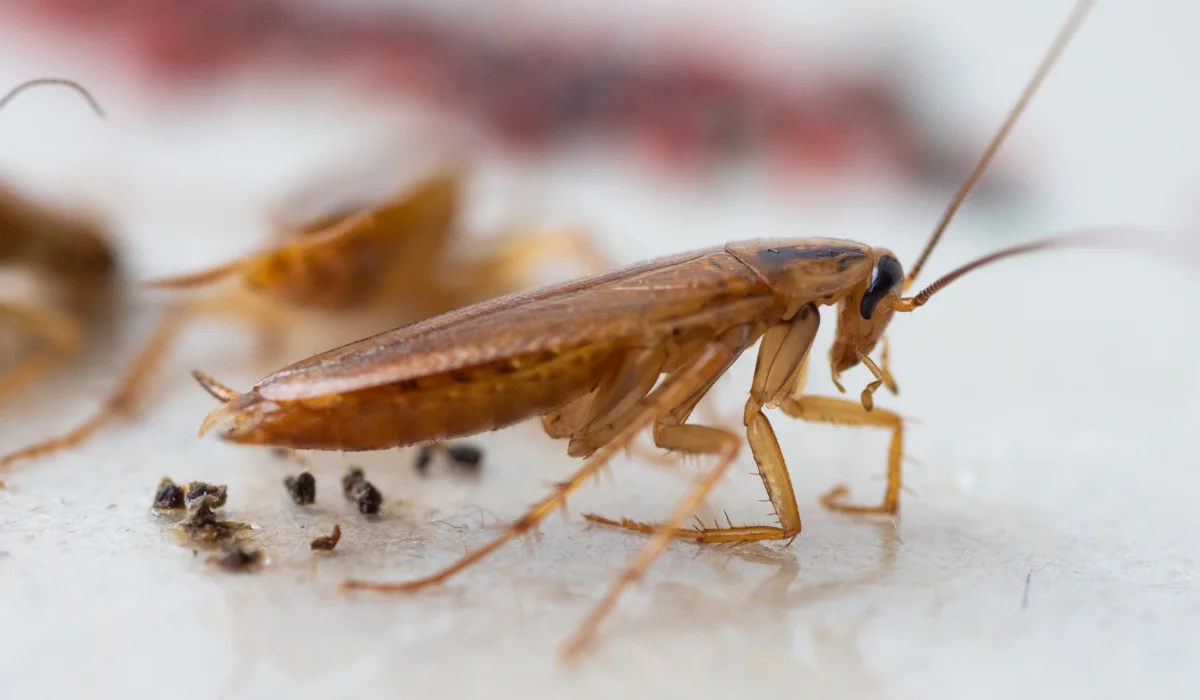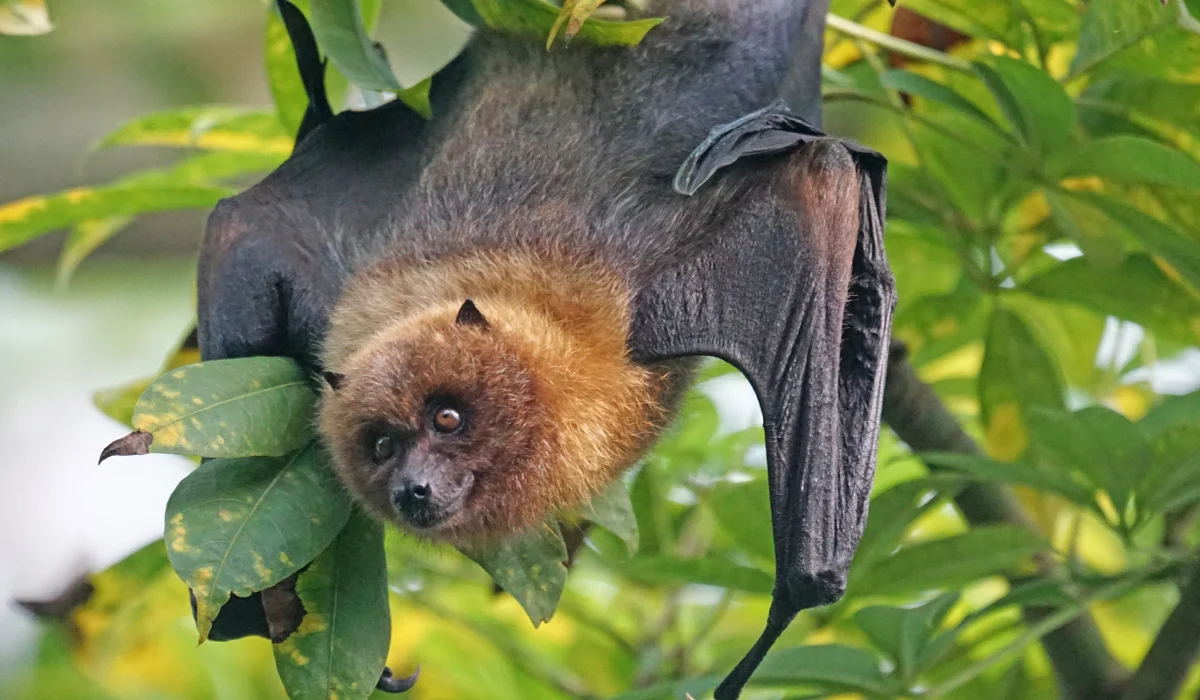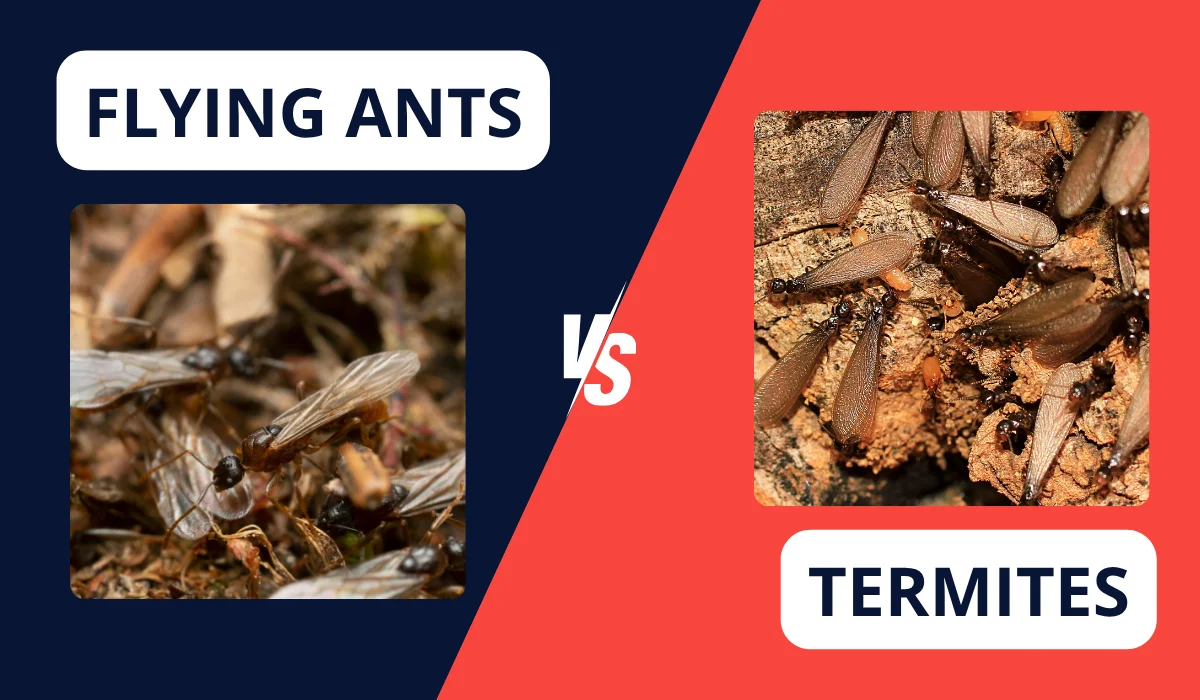
If you’re a homeowner in South Louisiana, spotting winged insects in or around your home is enough to raise concern. That’s because both flying ants and termites show up when conditions are just right, usually warm, humid days following rain. They can look a lot alike at a glance.
But here’s the thing: while they may appear similar, confusing one for the other can cost you. Let’s look at how to tell winged termites and ants apart and why it matters for pest control.
Key Takeaways
• Flying ants and termites may look similar, but their antennae, waist shape, and wings help tell them apart.
• Termites can eat through wood inside walls and floors, causing serious damage before you even notice anything wrong.
• Treating the wrong pest gives it more time to spread and makes the problem more expensive to deal with.
• A proper inspection and treatment from a professional pest control company can keep these pests from returning.
How to Tell Flying Ants and Termites Apart
Use this table to spot key differences between these two types of winged insects.
| Features | Flying Ants (Ant Swarmers) | Termites (Termite Swarmers) |
|---|---|---|
| Antennae | Elbowed or bent antennae | Straight termite antennae |
| Waist | Narrow or pinched waist | Broad waist with no noticeable pinch |
| Wings | Two sets of wings, front wings longer than hind wings | Two equal-sized wings (pairs of wings) |
| Color | Dark brown or black | Pale or creamy, sometimes tan |
| Wing Behavior | Wings are firmly attached to the body | Wings fall off easily, and are often found near windows |
| Diet | Worker ants do not eat wood; they carve to a nest | Eat cellulose in wood, drywall, and paper |
| Nest Location | Ant colonies in dry wood or wall voids | Termite colonies thrive in moist soil or crawl spaces |
| Damage | Minor surface damage | Serious structural damage, often hidden |
Why It’s Important to Know the Difference
When you see flying insects around your home, it’s easy to brush them off or panic. But the real risk is getting it wrong.
Here’s why that difference matters more than you might think.
A Termite Problem Isn’t Just About Bugs, It’s About Your Home’s Structure
Flying termites (alates) are one of the first signs inside or near your home. These are reproductive members of an existing colony, looking to start new colonies nearby.
Once they land and shed their termite wings, they start building nests and damaging wood.
Over time, you could be dealing with damaged wood inside your walls, subfloors, or even roof supports. Termite infestations can be especially tough to catch early in homes with basements or enclosed crawl spaces.
The Wrong ID Delays the Right Treatment
Flying ants are usually part of a larger ant colony, and while some ant species (like carpenter ants) do nest in wood, they don’t eat it. A termite swarm, however, means active feeding on your home’s cellulose materials.
If you’re dealing with termites but treat it like an ant infestation, you’re not solving the pest problem. You’re giving it more time to grow. Getting an inspection from a pest control company ensures you know exactly what you’re facing.
Pest Control Strategies Are Not One-Size-Fits-All
DIY methods might work on some ant problems, but termites require a different approach. Professional control includes treating the soil around the foundation, using bait stations, or applying a treatment barrier.
Ant control might focus on locating satellite nests and sealing entry points. Choosing the wrong path delays resolution and gives the pest more time to settle in.
Termites Multiply Fast and Quietly
The life cycle of a termite colony moves quickly once established.
Subterranean termites can grow colonies deep underground and build mud tubes up into your foundation or wall voids. You may not notice anything until you tap on a beam and it sounds hollow, or worse, until repairs are already needed.
What to Do if You’re Seeing Flying Ants or Termites
Seeing flying insects around your home can feel unsettling, especially when you’re not sure what they are.
Before jumping to conclusions, here’s how you can start narrowing it down.
Take a Closer Look at What You’ve Found
Flying ants typically have bent antennae and a narrow waist. Winged ants also have noticeably longer front wings than hind wings. Flying termites have straight antennae, a broad waist, and two pairs of wings the same size. These traits make a big difference when identifying what you’re dealing with.
Even better, take a close-up photo or safely collect a few for inspection. The right identification could save you thousands in termite damage.
Search for Signs of Termites and Ants
In addition to spotting the alates (swarmers), look for other indicators. Termite signs include hollow-sounding wood, cracked paint, mud tubes near the base of the home, and discarded wings.
Ant infestations might leave behind frass (sawdust-like debris) or show trails of worker ants moving through entry points.
Check areas like basements, crawl spaces, and attics, where pest activity often goes unnoticed.
Schedule a Professional Termite Inspection
A licensed pest control company can confirm if you’re dealing with termite colonies or an ant infestation. A termite inspection includes looking for warning signs, identifying high-risk zones like moisture-rich crawl spaces, and determining if you have subterranean termites or another termite species.
The sooner you confirm what’s living in your home, the faster you can get the right solution.
Choose the Right Treatment for the Pest
If you’ve got termites, you’ll need termite treatment designed to eliminate the entire colony. This might involve trenching, baiting systems, or direct wood treatment.
For carpenter ants or other ant species, control often includes finding and removing the nest, sealing cracks, and applying targeted products.
Prevent Future Infestations
Both termite swarmers and flying ants come out to start new colonies.
To keep them from choosing your home again, reduce standing moisture, seal up gaps in your foundation, and keep wood debris away from the perimeter. These steps go a long way in preventing the return of unwanted pests.
Think You’ve Got Flying Ants or Termites? We’ll Tell You for Sure.
Not sure if those flying insects are ant swarmers or termites? Don’t risk guessing.
At LaJaunie’s Pest Control, we specialize in identifying pest problems quickly and accurately. Our technicians will inspect your home and spot the early signs of termites or ants. We can recommend a treatment plan built for your home’s structure and location.
Give us a call or schedule your termite inspection online.
We’ll help you spot the difference, and fix the problem.
 By: LaJaunie's Pest Control
By: LaJaunie's Pest Control 